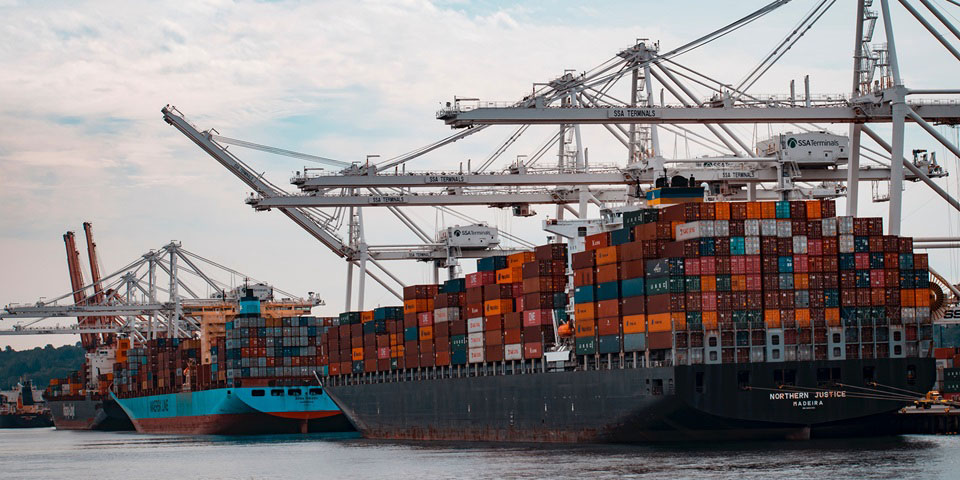Many businesses have experienced frustrating delays in having their goods delivered to customers during the pandemic due to planes being grounded and lockdowns.
If your business has been affected by pandemic-induced delivery disruptions, there are steps you can take to help manage supply chain risks and insurance can play a role.
Kiri Yanchenko, founder of innovative skin care business Amperna Retail, has felt the full force of COVID’s blow when shipping her popular products to customers around the world during the pandemic. Having overcome roadblocks manufacturing her products, her freight forwarding company invoked a force majeure clause in her contract, as well as emergency surcharges that increased her cost to send packages overseas by 20 per cent.
“Staffing issues are some of the reasons why packages have been delayed through the pandemic crisis”
When a business invokes force majeure, it means they do not need to perform their contractual obligations due to events outside their reasonable control, such as a pandemic. In this case, the freight forwarder increased its costs and suspended its usual guarantee that applies when a parcel is delivered outside the parameters stipulated in the contract.
“In addition, packages were being delivered either late or not at all. This has led to a huge increase in costs we can’t pass onto customers. In some cases, customers have sought a charge back from their banks if parcels haven’t been delivered in a timely fashion, which means we incur even more fees in the form of extra bank charges,” he explains.
To address this issue, Yanchenko is now negotiating with a new third-party logistics provider in the US to ensure her products are delivered to customers in a timely fashion.
Teradata supply chain consultant Danesha Marasinghe says staffing issues are some of the reasons why packages have been delayed through the pandemic crisis.
“Staff members have been unable to get to their place of work because of mobility restrictions. Freight forwarders have also had to invest in processes and procedures to ensure the safety of their staff and to comply with local regulations,” says Marasinghe.
“Supply networks continue to face significant challenges due to lock downs across the network affecting manufacturing plants, distributions centres, ports and logistics providers. This is having a real impact on many small businesses,” he adds.
Marasinghe recommends small businesses that are experiencing issues with their supply chain to review their relationships with logistics providers. He says there’s also an opportunity for small businesses who are experiencing supply chain issues to take an innovative approach to work around these problems.“Review relationships with suppliers and see if there are opportunities to collaborate.
If appropriate, explore ways to rationalise your product range based on supply availability.” He also says this period is an opportunity to review what customers are buying and how they are making purchases, to optimise product ranges and streamline inventories.
“Inventories are especially important to small businesses as they have a major impact on cash flow. One idea is to explore the potential to collaborate with other small business and share inventory. Now’s also the time to make the most of online platforms and social media to engage with customers. Small businesses must assess how they can adapt and evolve to survive the pandemic.”
Insurance can play a role as well. Business interruption insurance may provide cover in the event of supply chain disruptions, for example, because of property damages to the supplier’s premises. If you’d like more information about what your business interruption insurance covers, contact your Steadfast broker today.
Important note – the information provided here is general advice only and has been prepared without taking in account your objectives, financial situation or needs. Steadfast Group Ltd (ABN 98 073 659 677, AFSL 254928)
Important notice – Steadfast Group Limited ABN 98 073 659 677 and Steadfast Network Brokers
This article provides information rather than financial product or other advice. The content of this article, including any information contained in it, has been prepared without taking into account your objectives, financial situation or needs. You should consider the appropriateness of the information, taking these matters into account, before you act on any information. In particular, you should review the product disclosure statement for any product that the information relates to it before acquiring the product.
Information is current as at the date the article is written as specified within it but is subject to change. Steadfast Group Ltd and Steadfast Network Brokers make no representation as to the accuracy or completeness of the information. Various third parties have contributed to the production of this content. All information is subject to copyright and may not be reproduced without the prior written consent of Steadfast Group Limited.

